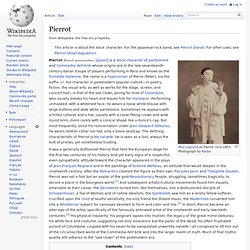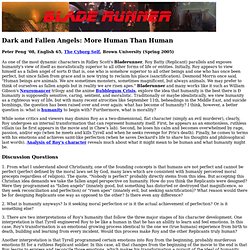

Somesuch » Latest. The Smallest Star. Gaspar Noé. Nicolas Winding Refn. Blastr. The Original Ending Of BEING JOHN MALKOVICH. Would the film have been as beloved if it ended with a battle against a giant Harry S.

Truman puppet? There are few films as anomalous as Being John Malkovich. On paper the movie itself should be insufferable - the story of a man who enters a portal into the mind of actor John Malkovich, gets involved in a love triangle with transgender implications and runs afoul of a cult intending to use Malkovich as their vessel for immortality sounds so unbelievably over-quirky that just typing this synopsis irritated me - but the actual film is funny and smart and avoids being quirky by being tongue-in-cheek and manages to be profound and effective in every way. It's a movie that shouldn't be any good, and it launched the film careers of two men who shouldn't be making the movies they make: Spike Jonze shot music and skate videos and writer Charlie Kaufman had done some episodes of Ned and Stacey.
Then Craig is visited by The Great Mantini, the world's best puppeteer. That does it - Mantini wins. Pierrot. Pierrot (French pronunciation: [pjɛʁo]) is a stock character of pantomime and Commedia dell'Arte whose origins are in the late seventeenth-century Italian troupe of players performing in Paris and known as the Comédie-Italienne; the name is a hypocorism of Pierre (Peter), via the suffix -ot.

His character in postmodern popular culture—in poetry, fiction, the visual arts, as well as works for the stage, screen, and concert hall—is that of the sad clown, pining for love of Columbine, who usually breaks his heart and leaves him for Harlequin. Performing unmasked, with a whitened face, he wears a loose white blouse with large buttons and wide white pantaloons. Sometimes he appears with a frilled collaret and a hat, usually with a close-fitting crown and wide round brim, more rarely with a conical shape like a dunce's cap.
But most frequently, since his reincarnation under Jean-Gaspard Deburau, he wears neither collar nor hat, only a black skullcap. Origins: seventeenth century[edit] Www.deep-focus.com. Dark and Fallen Angels: More Human Than Human. Peter Peng '08, English 65, The Cyborg Self, Brown University (Spring 2005) As one of the most dynamic characters in Ridley Scott's Bladerunner, Roy Batty (Replicant) parallels and exposes humanity's view of itself as moralistically superior to all other forms of life or entities.

Initially, Roy appears to view himself as a fallen angel of sorts Ð that is, one who is somehow superior to all other beings and one who has once been perfect, but since fallen from grace and is now trying to reclaim his place (sanctification). Desmond Morris once said, "Human beings are animals. We are sometimes monsters, sometimes magnificent, but always animals. We may prefer to think of ourselves as fallen angels but in reality we are risen apes. " While some critics and viewers may dismiss Roy as a two-dimensional, flat character (simply an evil murderer), clearly, Roy undergoes an internal transformation that can represent humanity itself.
Discussion Questions 1. 2. 3. 4. Sources. BladeZone: The Online Blade Runner Fan Club and Museum. Blade Runner - The Replicant Site - Jidaigeki. Actors playing samurai and ronin at Kyoto's Eigamura film studio Jidaigeki (時代劇?)

Is a genre of film, television, and theatre in Japan. Literally "period dramas", they are most often set during the Edo period of Japanese history, from 1603 to 1868. Some, however, are set much earlier—Portrait of Hell, for example, is set during the late Heian period—and the early Meiji era is also a popular setting. Jidaigeki show the lives of the samurai, farmers, craftsmen, and merchants of their time. §Types of jidaigeki[edit] Many jidaigeki take place in Edo, the military capital. Another way to categorize jidaigeki is according to the social status of the principal characters. Whether the lead role is samurai or commoner, jidaigeki usually reach a climax in an immense sword fight just before the end.
§Sengoku-jidai[edit] §Roles in jidaigeki[edit] Among the characters in jidaigeki are a parade of people with occupations unfamiliar to modern Japanese, and especially to foreigners. §Warriors[edit]